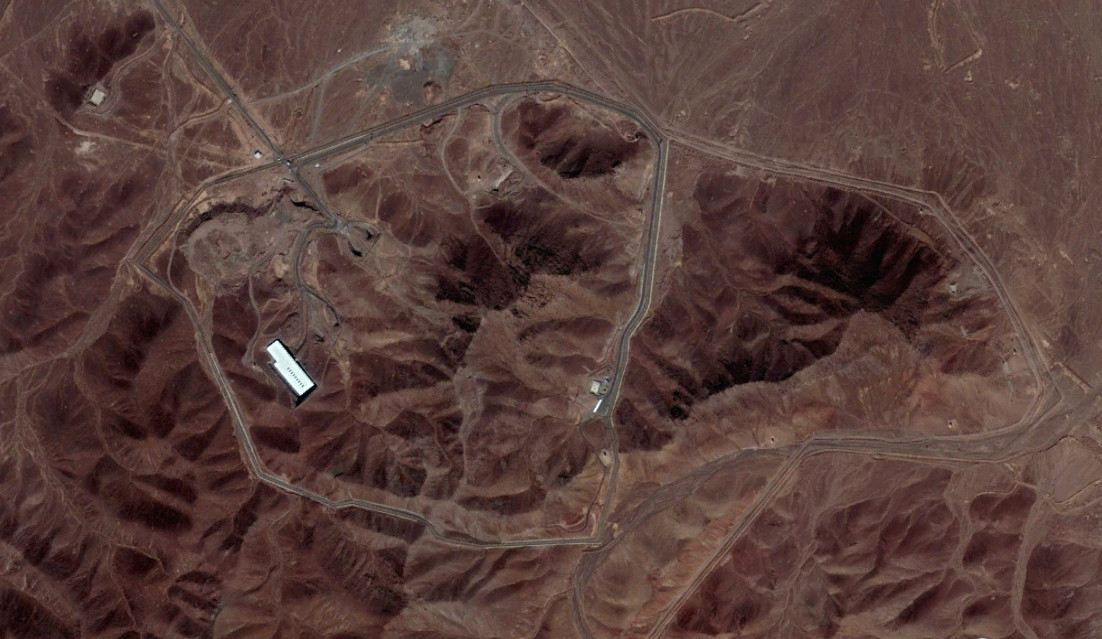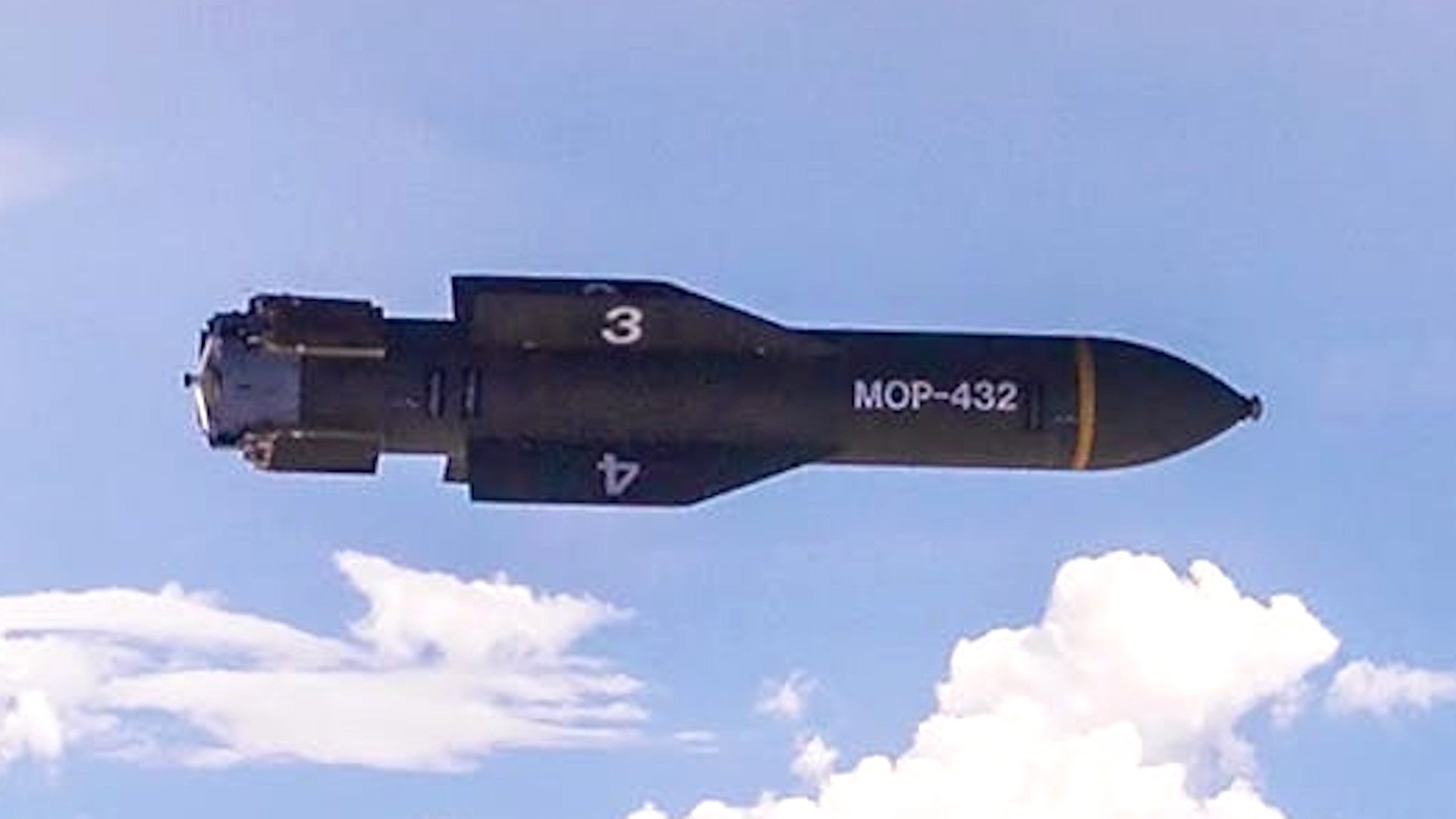The U.S. Air Force is continuing to update its stockpile of 30,000-pound class Massive Ordnance Penetrator bunker busters, or MOPs, and bring older MOPs up to the latest standard, also known as the GBU-57E/B. This comes as Iran has announced that it will begin injecting uranium hexafluoride gas into centrifuges at its underground nuclear facility at Fordo – the kind of prospective target that drove the development of the MOP in the first place – a significant breach of the controversial 2015 international agreement over the country’s nuclear program.
On Oct. 28, 2019, the Air Force announced that it had awarded $90 million contracts to both Superior Forge & Steel Corp. of Lima, Ohio and Ellwood National Forge in Irvine, Pennsylvania for the production of an unspecified number of case assemblies for the BLU-127C/B warhead. The service separately confirmed to The War Zone that this is the warhead at the core of the GBU-57E/B variant, which has been in operational inventory since 2016. The B-2 Spirit stealth bomber is presently the only aircraft capable of and clear to employ the MOP operationally, though B-52 bombers have dropped some of the weapons in prior testing. The future B-21 Raider stealth bomber will also likely be able to carry these weapons.
It is unclear how many MOPs of different variants, or in total, there are available for operational use. As of September 2011, the prime contractor, Boeing, had delivered 20 of the bombs, but it is known that there have been subsequent orders and that a number of the weapons have been expended in various tests since then. It is likely that the total number of available weapons has swelled in recent years.
In February 2018, the service had announced that it was buying an unknown number of additional complete MOPs from Boeing, which would also have likely have been in the GBU-57E/B configuration. The month before, Bloomberg had reported that a “fourth upgrade” program for the MOP was complete and that existing bombs in the stockpile were also being retrofitted.

It’s not entirely clear how the GBU-57E/B variant differs from previous MOPs, either. “The E/B variant enhances the ability to penetrate concrete structures and deliver the high explosive payload,” Ilka Cole, the Chief of Media Operations in the Public Affairs Office for the 96th Test Wing at Eglin Air Force Base in Florida told The War Zone by Email. Eglin is also home to the Air Force Life Cycle Management Center’s Armament Directorate, which is responsible for managing the MOP program.
The MOP effort dates back to at least 2002 and early publicly available graphics showed the bomb being able to burrow down up to 60 feet to get to their target. In 2007, an official Air Force news story said that this capability had expanded to up to 200 feet. Whether or not this maximum depth accounts for penetrating through layers reinforced concrete is unclear.

The story from 2007 would have likely been referring to the first and second warheads, known as BLU-127/Bs and -127A/Bs, though it might have been referencing work on the subsequent BLU-127B/Bs, as well. GBU-57/B, -57A/B, and -57B/B were fitted with the BLU-127/B, -127A/B, and -127B/B warheads respectively.
What subsequent improvements Boeing made to the GBU-57C/B and -57D/B variants are unclear, but, as The War Zone previously reported, the latter type did at least include an improved fuze. The “C/B” part of the BLU-127C/B designation is arbitrarily assigned and does not automatically mean it was first used in the GBU-57C/B, either.
Based on the fact that the GBU-57E/B model was in inventory in at least some numbers in 2016, it is likely that these weapons were developed as part of the Enhanced Threat Reduction IV (ETR-IV) upgrade program, which Boeing won the contract for the year before. Evaluation of bombs with the ETR-IV updates also continued into 2017, according to the Pentagon’s Office of the Director of Operational Test and Evaluation.
Whatever the GBU-57E/B’s exact capabilities are, it would seem reasonable to assume that it can penetrate deeper than the MOP variants available in 2007. We know that the inert BLU-127C/B, at least, has a “booster” in the forward portion of the warhead, but it is unclear if this refers to a system that physically propels that section, such as rocket motor, for added penetration or an explosive charge that simply accelerates the detonation of the main charge.
The added penetration would be necessary to strike at especially deeply buried and hardened facilities, such as Iran’s nuclear facilities at Fordo. The main portions of this site are reportedly around 295 feet underground and further shielded by multiple feet of reinforced concrete.

In addition, Cole, the spokesperson for the 96th Test Wing, said that the GBU-57E/B was available with both “live and inert” warheads. “Inert weapons perform a variety of roles based upon mission requirements,” she added.
Thanks to its GPS guidance, it is possible that B-2s could drop multiple weapons on the same spot, one after another, using inert versions first to help “dig down” to the target, softening up the layers above and allowing each consecutive bomb to burrow deeper. Inert versions would also be useful for test and evaluation and training purposes.
There is, of course, no indicator that the United States is actively preparing to strike Fordo, or any of Iran’s other underground nuclear and ballistic missile-related sites. The United States already pulled out of the Iran Deal, formally known as the Joint Comprehensive Plan of Action (JCPOA), in 2018.

The other parties, chiefly France, German, and the United Kingdom, have since struggled to keep the agreement alive. Iran has steadily sought to put pressure on those countries to make concessions, especially as U.S. sanctions have increased.
The decision to begin filling centrifuges with uranium hexafluoride gas, which is banned under the JCPOA, is a major indicator of how far the regime in Tehran is willing to weaken what is left of the deal to try and get those countries to agree to its terms. Though Iranian President Rouhani has not said that Fordo will begin enriching uranium again, which the Iran deal also prohibits, filling the centrifuges with the gas is a clear step in this direction.
This all comes just a day after Iran announced that it had doubled the number of IR-6 centrifuges in operation at the site and that it was working on an even more advanced IR-9 that can enrich uranium 50 times faster than the country’s original IR-1. Rouhani has given the JCPOA’s European members just two months to find a way around American sanctions before Iran might take new actions, which could include resuming enrichment.

Critics of the Iran deal have long contended that it left the regime in Tehran with a “breakout” capability to build nuclear weapons if it chose to do so. At the same time, publicly available U.S. intelligence assessments have continually indicated that the country does not have an active nuclear weapons program and was abiding by the terms of the JCPOA even immediately after the United States withdrew.
Tensions between the United States and Iran have otherwise been building for months, with the U.S. government, among others, blaming the Iranians for a string of attacks on commercial oil tankers in the Middle East, as well as more recent and unprecedented suicide drone and cruise missile attacks on oil infrastructure in Saudi Arabia. Iran also shot down a U.S. Navy Global Hawk drone over the Gulf of Oman in June and seized a British-flagged oil tanker the following month, keeping it impounded for weeks in retaliation for the U.K. government doing the same to an Iranian supertanker in Gibraltar.
It is worth noting that the potential threats that the United States developed the MOP to address aren’t limited to Iran, either. North Korea, which has also become increasingly upset with the lack of progress in its own negotiations over sanctions with the U.S. government, also has extensive networks of underground facilities. The GBU-57-series could also be useful for engaging deep, hardened targets during a larger scale conventional conflict against potential peer adversaries, such as China or Russia.
With all this in mind, it’s hardly surprising that the Air Force is continuing to work to upgrade the MOP and bring its existing inventory up to the latest, deepest penetrating standard.
UPDATE —
Ilka Cole, the 96th Test Wing’s Chief of Media Operations has confirmed to The War Zone by Email that the GBU-57E/B variant was in the Air Force’s available inventory by 2016 and that there are no newer variants at this time. An unspecified number of GBU-57D/Bs also remain in inventory at this time.
Contact the author: joe@thedrive.com
